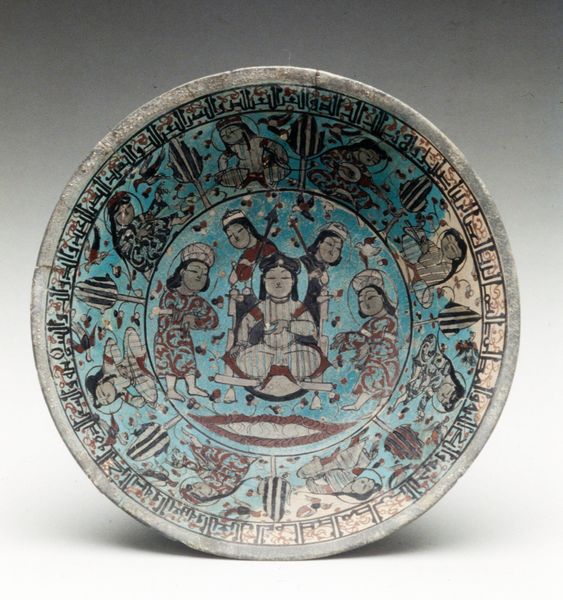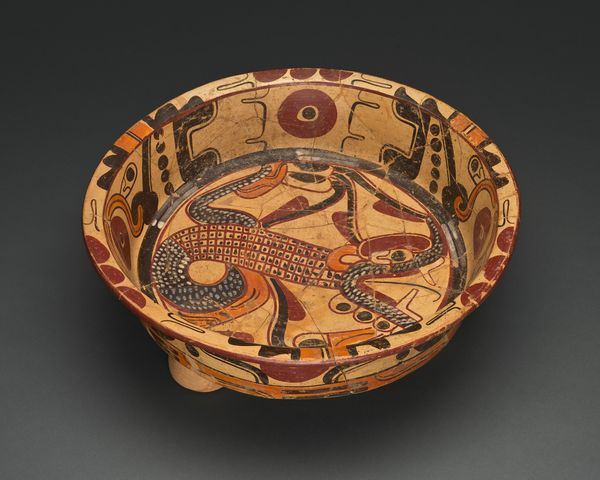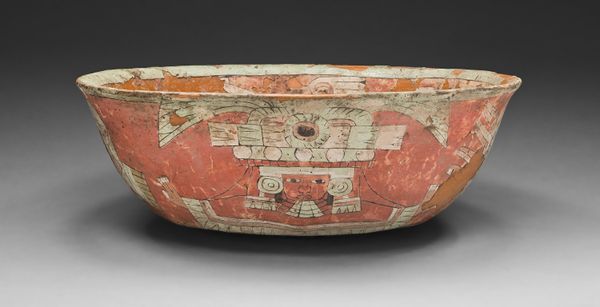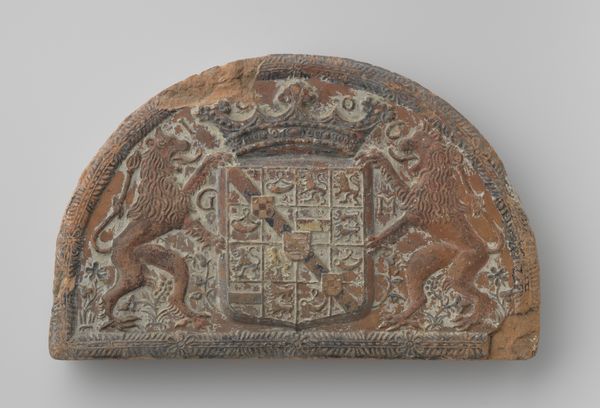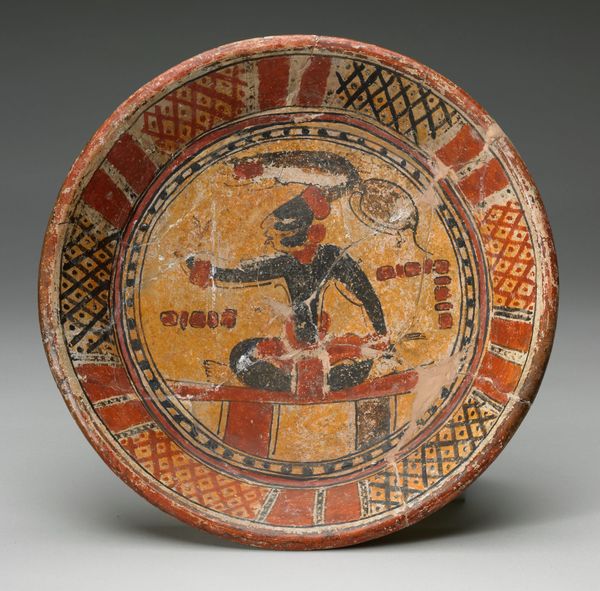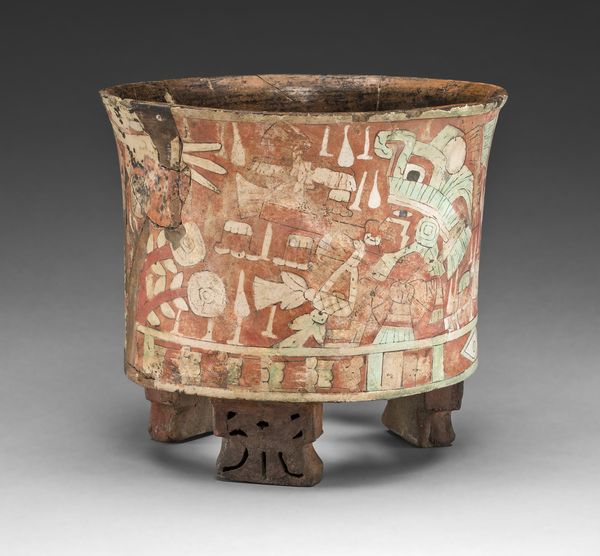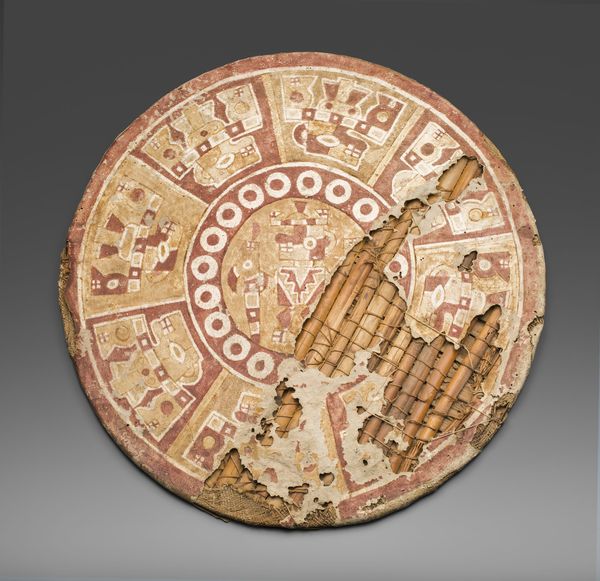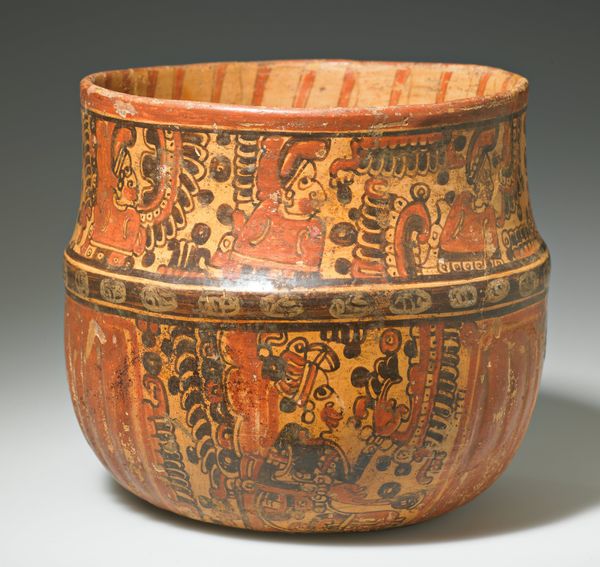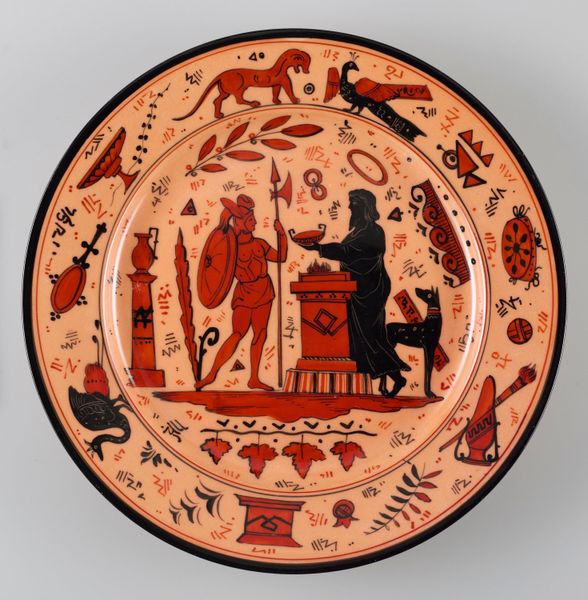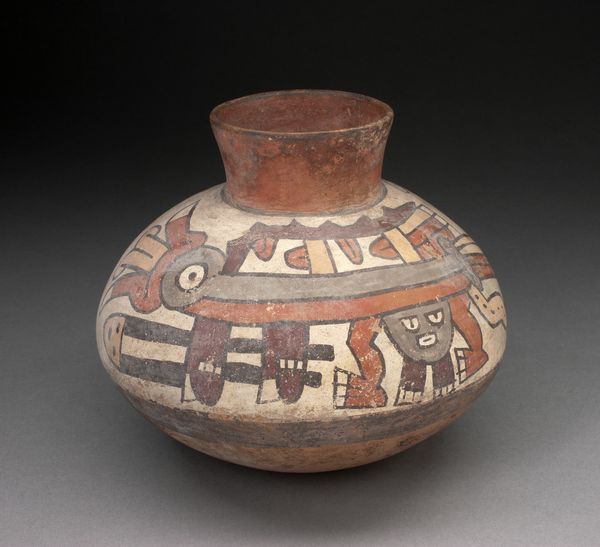
Lobed Bowl with Seated Figure and Attendants Seljuq dynasty (1037–1194), late 12th/early 13th century
0:00
0:00
ceramic, earthenware
#
narrative-art
#
pottery
#
asian-art
#
ceramic
#
figuration
#
earthenware
#
stoneware
#
ceramic
#
islamic-art
#
miniature
Dimensions: H.: 9.6 cm (3 3/4) in.); diam.: 20.3 cm (8 in.)
Copyright: Public Domain
Editor: This is the "Lobed Bowl with Seated Figure and Attendants," from the late 12th or early 13th century, dating back to the Seljuq dynasty. It's earthenware with enamel, housed here at the Art Institute of Chicago. The intricacy of the decoration is quite striking – it really draws the eye inward. What catches your attention most about the piece? Curator: Immediately, the segmented composition arrests the gaze. Note how the artist uses geometric partitions, punctuated by curvilinear lobes, to frame a series of miniature vignettes. This division achieves a remarkable interplay between order and dynamism. Editor: Yes, the segmentation is fascinating. It almost feels like a comic strip unfolding. How does that segmentation influence the overall reading of the narrative? Curator: Precisely. Consider the color palette, limited to predominantly red, blue, and white. Observe how these hues are deployed not naturalistically, but rather to accentuate compositional structure and direct visual flow. Each field of color emphasizes the overall form, rather than contributing to a cohesive, representational scene. Do you see how the linearity and limited palette enhances the bowl's inherent geometry? Editor: I do! It's less about a story and more about how all these little shapes contribute to the large, round shape. So, it’s less a narrative scene, and more a design choice. Curator: Indeed. It’s a fascinating exploration of form, color, and the power of controlled visual elements, contained within a seemingly functional object. Editor: I hadn't considered it that way. Looking at the work again, I appreciate how the divisions make it visually dynamic, regardless of the imagery. Curator: And conversely, even absent figuration, it is difficult not to decode its symbolic visual language, if one were determined to read for pure information alone.
Comments
No comments
Be the first to comment and join the conversation on the ultimate creative platform.

